- News
- Reviews
- Bikes
- Accessories
- Accessories - misc
- Computer mounts
- Bags
- Bar ends
- Bike bags & cases
- Bottle cages
- Bottles
- Cameras
- Car racks
- Child seats
- Computers
- Glasses
- GPS units
- Helmets
- Lights - front
- Lights - rear
- Lights - sets
- Locks
- Mirrors
- Mudguards
- Racks
- Pumps & CO2 inflators
- Puncture kits
- Reflectives
- Smart watches
- Stands and racks
- Trailers
- Clothing
- Components
- Bar tape & grips
- Bottom brackets
- Brake & gear cables
- Brake & STI levers
- Brake pads & spares
- Brakes
- Cassettes & freewheels
- Chains
- Chainsets & chainrings
- Derailleurs - front
- Derailleurs - rear
- Forks
- Gear levers & shifters
- Groupsets
- Handlebars & extensions
- Headsets
- Hubs
- Inner tubes
- Pedals
- Quick releases & skewers
- Saddles
- Seatposts
- Stems
- Wheels
- Tyres
- Health, fitness and nutrition
- Tools and workshop
- Miscellaneous
- Tubeless valves
- Buyers Guides
- Features
- Forum
- Recommends
- Podcast
TECH NEWS
Just In: Merida Scultura Disc Team
The Merida Scultura Disc Team has just arrived here at road.cc for testing, a lightweight race bike with a top-level Shimano Dura-Ace groupset, hydraulic disc brakes and a £6,500 price tag. If that superbike price tag puts you off, other Scultura Discs are available from as little as £850.
After the £9,500 Bianchi Oltre XR4 and the Pinarello Dogma F8, this is the third very expensive bike to have arrived at road.cc in the past couple of weeks. Don’t worry, we’re not switching to reviewing only superbikes; it’s just the way things have worked out lately. Normal service will be resumed shortly.
Now, before we start, you could argue with the ‘race bike’ tag in that the UCI has suspended the use of disc brakes for road competition. There have been rumours that disc brakes will be permitted again soon, but nothing concrete has been announced. We take that on board, but even if disc brakes were never allowed in the pro peloton again (they will be), this is a proven race bike with disc brakes.
Check out our review of the Merida Scultura 6000 from earlier in the year.
The Scultura is the lightweight road bike in Merida’s range. It has aerodynamic elements but the Reacto is the real aero bike in the lineup. The Scultura is available in several rim brake builds.
Read our Merida Reacto 5000 review here.
Despite the UCI’s current position on disc brakes, Merida remains committed to their use in road cycling. If you’re cynical – and you probably are – you might argue that the brand has little choice but to back disc brakes after spending time and money developing a high-end bike like this.
According to Merida, “Disc brakes add a small amount of weight to a bike, but compared to rim brakes the following advantages cannot be underestimated:
• consistent braking power, independent of the weather (most notably when wet)
• the rim as a load-bearing component is not subject to abrasion anymore
• exclusion of the danger of carbon rims to delaminate
• exclusion of the danger of tubes to burst open due to heat buildup (especially latex)”
Feel free to argue the toss about that in the comments below... after I've gone.
Merida says that the Scultura Disc “combines the comfortable but also stiff and efficient riding characteristics of the rim brake variant with the general benefits of disc brakes”.
The Scultura Disc is available in three frame variants, two carbon-fibre and one aluminium. Let's crack into some more bullet points, seeing as Merida started it.
• The top-level Scultura Disc CF4 weighs a claimed 900g. This is the one used by Team Lampre-Merida, and the one we have here.
• The CF2 weighs just below 1000g, according to Merida.
• The Lite, the aluminium model, weighs under 1,500g.
The CF4 is built to a race bike aggressive geometry while the CF2 and the Lite frames are more relaxed although still performance orientated.
The CF4 frame we have here is 59cm, the largest available. It has a 590mm seat tube, a 590mm top tube, and a 190mm head tube.
The stack height (the vertical distance from the centre of the bottom bracket to the top of the head tube) is 592mm and the reach (the horizontal distance between those points) is 409mm. Those figures suggest that reviewer Jez will be riding in quite a low and stretched riding position.
Merida says that the Scultura Disc is almost identical to the rim braked version in terms of head tube and bottom bracket stiffness, comfort and aerodynamics.
The chainstays are slightly longer – by 8mm – to allow clearance for tyres up to 28mm wide, but the only other differences are related to the disc brakes, adjustments having been made to the fork and the rear triangle to handle the one-sided disc brake forces.
The Scultura Disc retains the NACA Fastback tube profiles of the rim brake model, designed for aerodynamic efficiency. In other words, the tubes are designed according to known aero shapes, but rather than the profile tailing off gradually, Merida chops it off square. It’s an approach taken by many other bike manufacturers, the idea being to maintain the aero performance while saving weight, avoiding handling issues in crosswinds, and staying within UCI equipment rules.
The Scultura Disc features 12mm thru-axles (100 mm front, 142 mm rear) with 160mm braking discs.
The thru-axles on the CF4 are the RAT (Rapid Axle Technology) design introduced by Focus to allow for fast wheel changes.
The CF4 and the CF2 both use flat mount callipers front and rear.
The carbon models across all price ranges feature Merida’s new Disccooler design (above). That calls for an explanation.
“While front brakes are always well-cooled thanks to constantly being exposed to the oncoming airstream, the performance of rear brakes benefits from active heat management,” says Merida.
“The Merida engineers had their own vision how this could be done and developed a new solution. The resulting component is made of forged aluminium and is screwed tight under the rear calliper.
“In this position, it effectively dissipates the uprising heat through CNC-milled cooling fins. Tests confirm that during a four-minute brake the temperature is reduced by roughly 35°C with the Disccooler.”
We’re not sure of the exact nature/protocol of those tests so that 35°C figure doesn’t mean a lot, but you get the idea.
So, that’s the frame taken care of for the time being. More than enough, some might contend. The full carbon fork that slots in there has a tapered steerer that spins on a 1 1/8in bearing at the top and a 1 1/4in bearing at the bottom.
The Scultura Disc Team is built up with Shimano’s top-level Dura-Ace Di2 groupset...
...although the chainset is a Rotor 3D with round NoQ 52/36-tooth chainrings (as opposed to Rotor’s non-round Q-Rings). The cassette is 11-28-tooth.
The carbon-fibre handlebar is an FSA K-Force with a compact drop while the stem is from FSA too – an OS99 that’s made from 3D forged and CNC machined AL2014 with a unidirectional carbon weave skin applied over the top.
The wheels are Fulcrum Racing Quattro Carbon Discs fitted with Continental Grand Prix 4000S tyres. These are a 25mm width although, as I said, there’s enough space for 28s.
The saddle is a Prologo Scratch 2 T2.0.
The CF4 carbon-fibre frame is also available in a Shimano Ultegra Di2 build with DT Swiss R23 Spline wheels for £4,000.
The CF2 frame mentioned earlier is available in two Shimano Ultegra builds. The Scultura Disc 5000 comes with Merida’s own wheels for £2,100, while the £2,400 Scultura Disc 6000 has Fulcrum Racing Expert wheels.
There are three models built around a 6061 aluminium triple-butted frame and full carbon fork. The £850 Scultura Disc 200 has mainly Shimano Sora components, the £1,300 Scultura Disc 400 is Shimano 105 based, and the £1,500 Scultura Disc 500 is a Shimano Ultegra (mechanical) build. It's a pretty Shimano-based lineup, then!
The £6,500 price tag makes the Merida Scultura Disc Team a superbike in the eyes of road.cc. In the road.cc Superbike Shootout 2015-16, we set the figure for qualifying as a superbike at £3,000. It was totally arbitrary, but we had to choose something. Whatever the cutoff next time, the Scultura Disc Team will be above it.
The Cervelo C5 Dura-Ace Disc that we reviewed is a fairly similar price at £6,199. That’s a carbon-fibre performance bike with a Dura-Ace (mechanical) groupset and hydraulic disc brakes. It’s a great bike, Dave Arthur saying, “Fast, stable, predictable and balanced, Cervélo's new C5 is a class leader”.
We’ve also reviewed the Look 795 Aerolight, priced at £4,449.99 for just the frameset. A complete bike with a Shimano Dura-Ace mechanical groupset and Mavic Aksium Elite wheels is £6,209.99. We described it as “an innovative aero road bike that delivers plenty of speed, but only for those with a large budget”.
Right, that’s the background. Jez will be back with a review of the Merida Scultura Disc Team soon.
Mat has been in cycling media since 1996, on titles including BikeRadar, Total Bike, Total Mountain Bike, What Mountain Bike and Mountain Biking UK, and he has been editor of 220 Triathlon and Cycling Plus. Mat has been road.cc technical editor for over a decade, testing bikes, fettling the latest kit, and trying out the most up-to-the-minute clothing. He has won his category in Ironman UK 70.3 and finished on the podium in both marathons he has run. Mat is a Cambridge graduate who did a post-grad in magazine journalism, and he is a winner of the Cycling Media Award for Specialist Online Writer. Now over 50, he's riding road and gravel bikes most days for fun and fitness rather than training for competitions.
Latest Comments
- don simon fbpe 7 min 43 sec ago
I can't work out whether this is a complaint about being pushed down the list or a huzzah for the plucky Brits trying to kick Putin's ass and fight...
- Rendel Harris 51 min 54 sec ago
I can't speak for this company but I know a couple of people who have contacted manufacturers (one through their LBS, one direct) and asked for...
- chrisonabike 2 hours 25 min ago
That sounds most unfair! They'd been "pro-social" (to drivers) by blocking the footway as well as part of a lane!...
- Rendel Harris 5 hours 56 min ago
I'm afraid that has been a really worrying change over the last few decades: thirty years ago just shouting at a thief to let them know they'd been...
- hawkinspeter 6 hours 27 min ago
I do carry a cheap TPU tube for emergencies, but the Dynaplug is so much quicker and easier than needing to remove wheel/tyre etc. You just get the...
- Rendel Harris 7 hours 6 min ago
March 21st, 1967: birth of Adrian Chiles.
- chrisonabike 8 hours 33 min ago
(This is rather OT now, but...)...
- chrisonabike 9 hours 14 min ago
That's old hand! You really want a hand with integrated display.
- David9694 10 hours 42 min ago
It made a hole and police are looking into it.
- Rome73 13 hours 3 min ago
Yes, I agree. These huge vehicles scare cyclists and discourage cycling. I would not let my children cycle some of the routes I regularly cycle...






































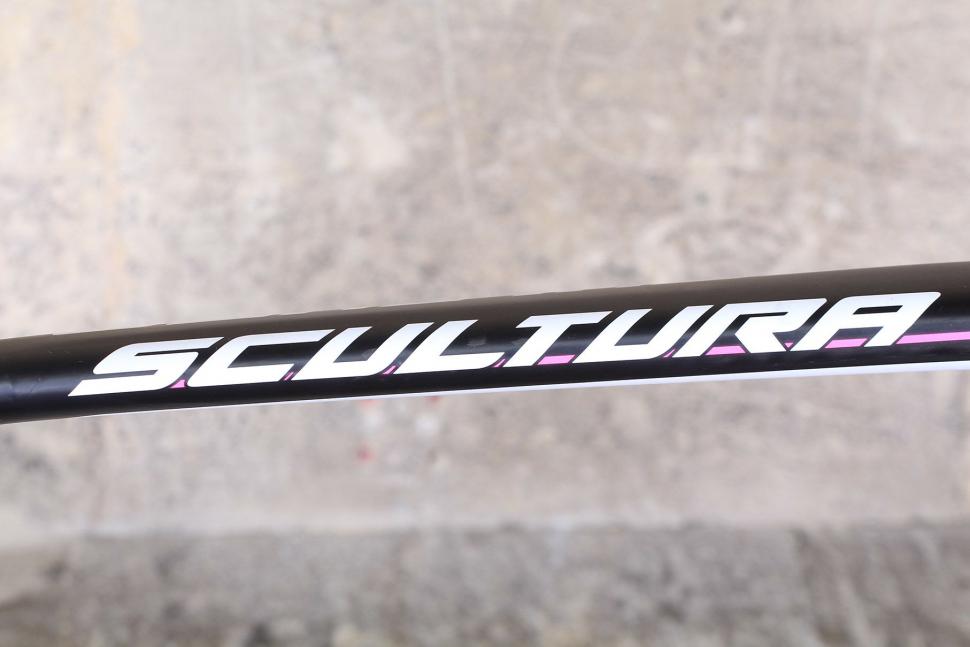

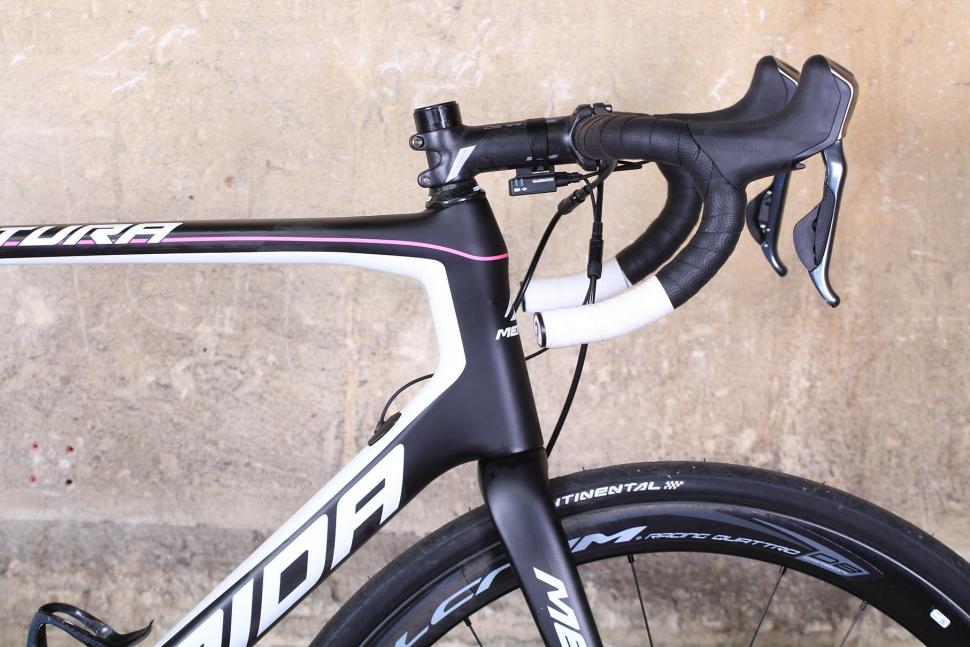

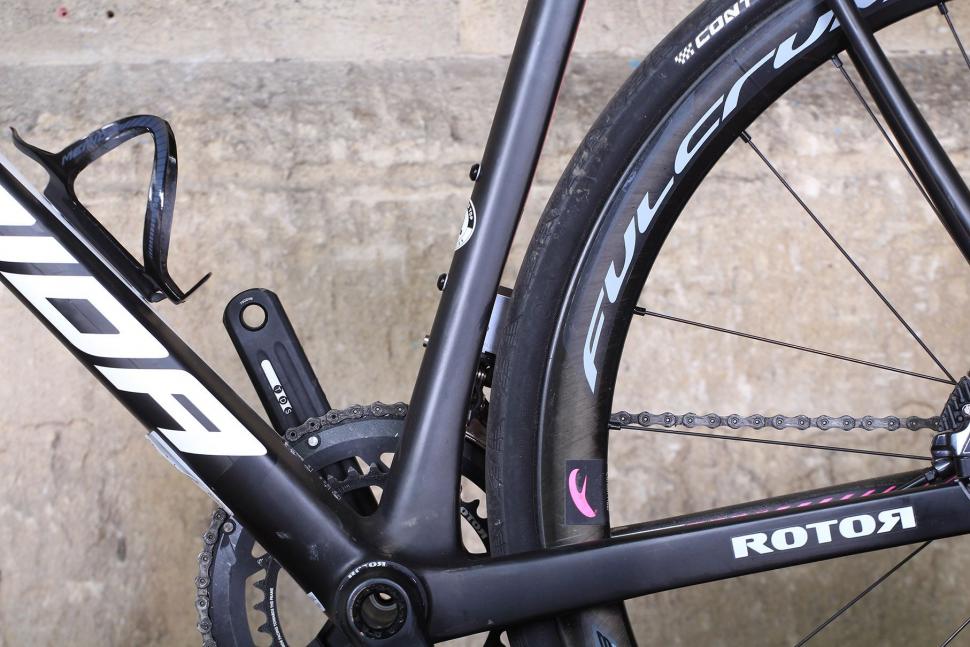

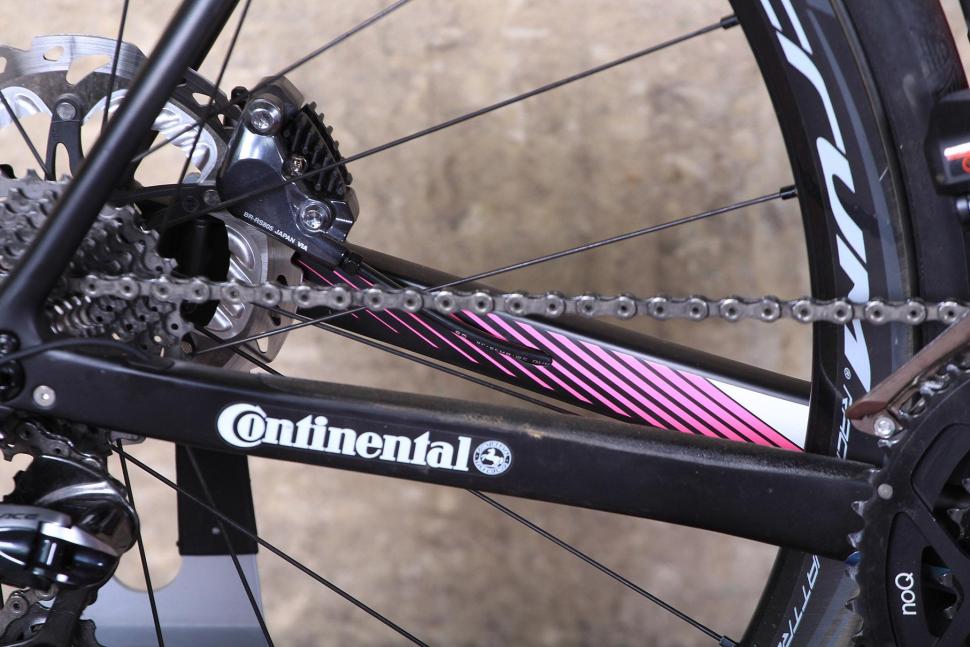
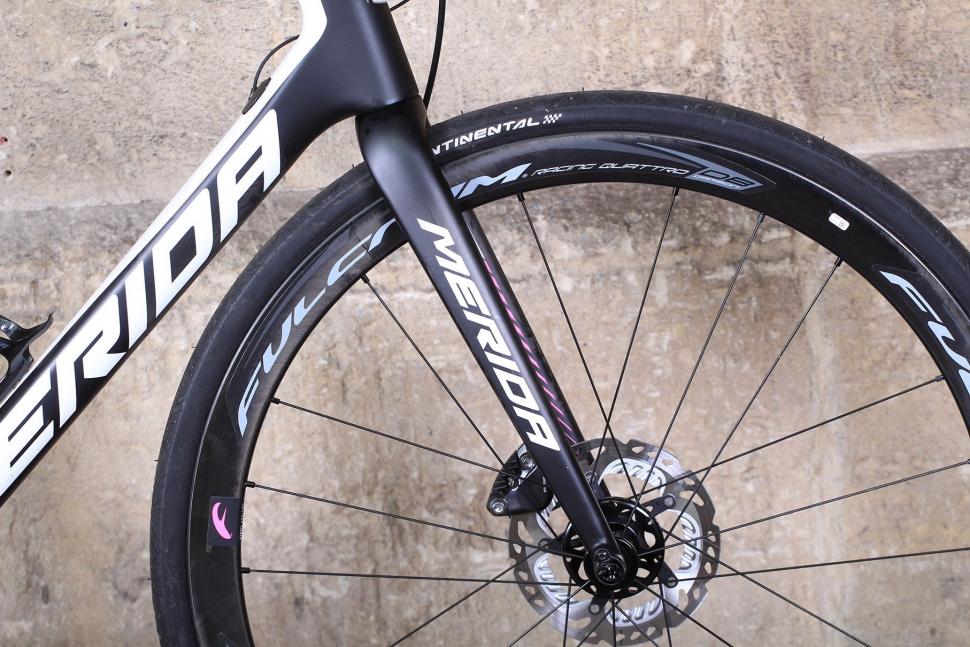



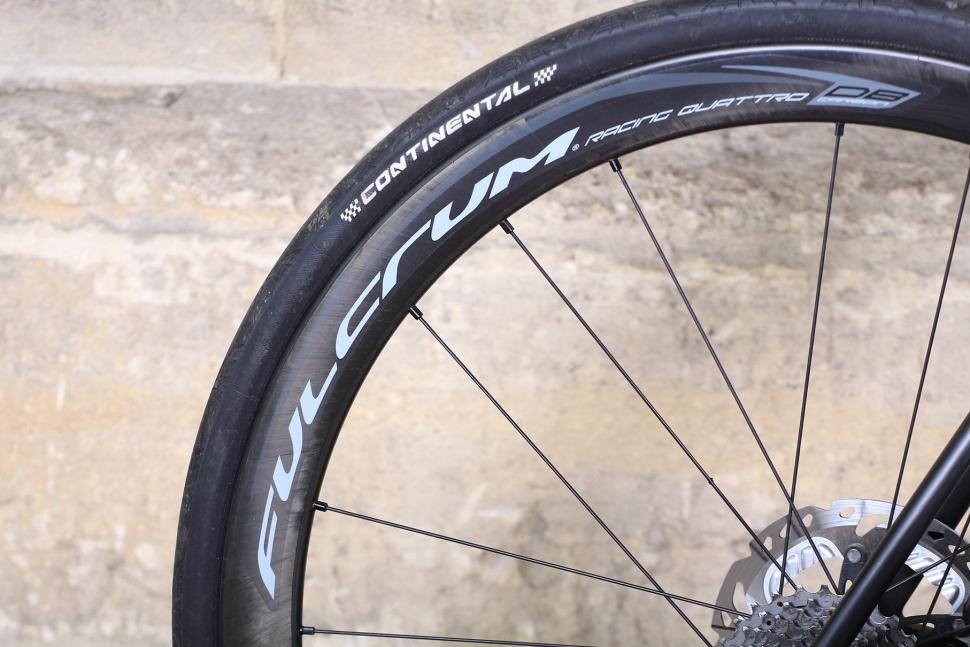

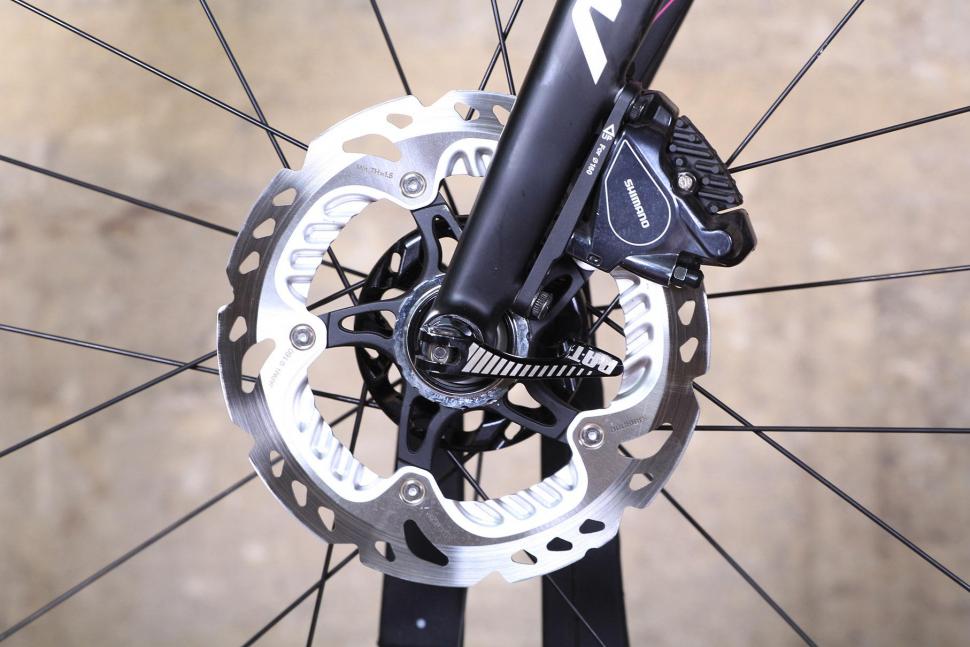
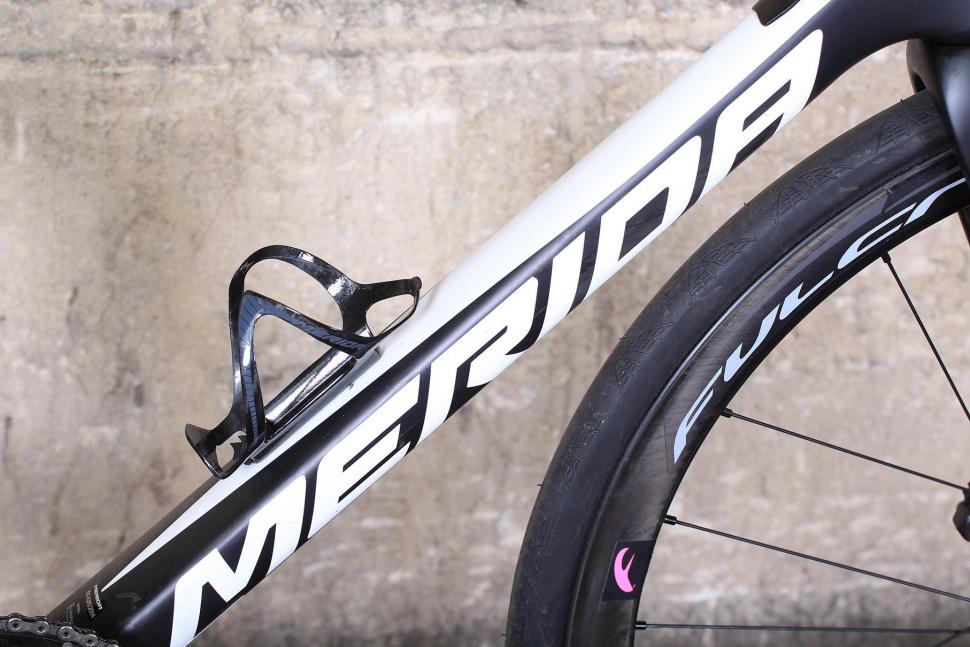
Add new comment
14 comments
Another carbon bike with discs.
Boring!!
Just a minor reiteration. The weight wasn't from accurate scales, and moreover included pedals, as I couldn't be arsed to take them off. So I'd wager it's really a sub 8kg bike, given that bike weights are always given sans pedals.
That notwithstanding, I agree it's likely to be seen as a bit heavy for its price tag.... but on the road it genuinely isn't something I've noticed.
@guyrwood - interesting video, though you're preaching to the converted as I've never bought a carbon clincher for this very reason. Note that he doesn't include tubs in his criticism.
I concede discs will provide superior braking, but disagree (for now) that they are right for this type of application. Remeber this is a £6,500 superbike! My (vastly cheaper) rim-braked TCR Advanced Sl size large with deeper wheels and cheaper finishing kit is 6.9kg.
As for 'until you have the body fat % of Chris Froome you don't need to worry about frame weight' - well, how about 'until you can descend like Peter Sagan you don't need to worry about needing more braking power'!
It's horses for courses but you have to accept that currently there are compromises to the superior braking offered by disc brakes. Just as there are compromises to, for example, choosing a 32 spoke wheel for it's strength.
There's an Australian guy on Youtube called Cycling Maven who took his bike to a carbon fibre repair place to be fixed. The carbon repair guy is an ex-Boeing carbon fibre expert engineer who basically knows carbon inside out. If you search his channel, he interviews the carbon fibre guy and put it out as two ~20 minute videos that will seriously enlighten you about carbon fibre.
His views on carbon fibre wheel rims and caliper brakes are very interesting. He says they're awesome on relatively flat rides but he explains brilliantly why they're fundamentally flawed for hilly riding with lots of descending but why carbon rims are perfect for discs. The videos are a fascinating watch.
Here's the first one.
Here's the second one.
So, what does the whole bike weigh?
We'll weigh it properly for the review, for now I've just got my bathroom scales to hand so it's not that accurate.
8.1kg with pedals
A bit more than you'd probably expect, albeit in a 59.
Thanks Jez. Over 8kg and £6500 - that's a massive problem.
You report that Merida say "Disc brakes add a small amount of weight to a bike" but that's clearly not the case since the Scultura Team is listed at 6.6kg albeit that's a claimed weight and not in a 59. Also, the Scultura Team isn't even their lightest bike - the Scultura Superlite Ltd is 4.52kg claimed.
So the difference between their lightest disc braked bike and lightest rim braked bike is over 3.5kg.
Even taking into account the artificially high 6.8kg UCI limit, 1.3kg is a lot. That's the sort of weight that normally costs thousands to save.
Keep the discs for non-race bikes at least until they can hit the UCI limit.
Er, why? 8kg is still bloody light and unless you have a body shape and fat % to rival Chris Froome, it'll make bugger all difference to you when riding.
Sorry but what? You might as well compare the Scultura Ltd with one of the Alu Sculturas - the frame construction is very different, regardless of the discs, with every tube tweaked even compared to the Scultura Team, and a totally different finishing kit.
If you take everything away to leave just the frames you start getting a much better picture. As stated in the article the frame weight for the Team Disc is 900g, which is only 150g more than the non-disc. The weight penalty for the brakes themselve is in the region of 300-400 grams, depending on rotor choice etc. So like for like weight different is actually closer to 500g.
So why is the Team Disc over 500g heavier than the standard team - did you spot the deeper wheels? May not explain all the remaining difference but it's the most obvious example of the fact that the frames and brakes are not the only differences betweent he bikes.
Again, disagree. Aero is more important the weight (within reason), which is why on most pro races/stages riders will opt for the heavier aero bike (Giant Propel, Merida Reacto) and deeper wheels over the often quite a bit lighter semi-aero (like the Scultura or TCR) and much lighter shallow wheels.
The moment discs will become accepted in the pro scene is when the aero is sorted on disc wheels such that it counteracts or even surpassas the fairly minimal aero disadvantage of disc brakes. That will come once the rim manufacturers are confident enough to put more R&D money into rims that don't need a brake surface, something that may only happen once discs are permenantly allowed back in the pro set-up.
Will we still see rim brakes for the big mountains? While the two brake types are allowed in the peleton, probably yes, even if the minimal weight difference only makes a psycological difference, but once discs are the only brake type being used (it will happen), everyone will be in the same boat so it'll not matter if there's a weight penalty.
Probably throughout the entire history of the racing bicycle, and at least for the last few decades, people have been prepared to pay through the nose for lighter bikes, and they expect lightness when the price is high.
Hydro disc brakes are not a game changer, they are subjectively different.
I just can't see anyone buying a racing bike for racing who would find 8.1kg and £6500 to be an agreeable combination.
I have a £4k disc braked commuter/do it all bike that weighs 8.5kg. If I didn't need it for commuting (where hydro discs have several significant advantages: low maintenance and emergency wet braking performance) I would have bought a bike with rim brakes.
Oh go on then..
'the rim as a load-bearing component is not subject to abrasion anymore' and
'exclusion of the danger of carbon rims to delaminate'
How much of a problem is this for carbon wheels? They make it sound like they're in danger of exploding or something!!
I have a pair of carbon rims over 3 years old of regular use with rim brakes, showing absolutely no wear other than cosmetic from the colour of the pads)
As for:
'Exclusion of the danger of tubes to burst open due to heat buildup'
That's only applicable to clinchers not tubs. Which, on a £6.5k racing bike, are going to be considered by users.
Like it or not, Merida's points are valid. As engineering concepts go, rim brakes are pretty daft - i.e. lets take the item that holds the rather important tyre onto the bike and subject it to unecessary heat and wear.
Rim brakes are/were only fitted to bikes because many years ago they were the least worst option. Granted, they have developed into a pretty good option, but the fundamental flaws do still exist.
Disc brakes deal with these issues.
Clearly disc brakes have there negatives as well - not quite as aero, a little heavier, and (the main one in my view ) the pads can be quite easily contaminated, and when they are, you can have a big problem, although as long as you always do a quick couple of pre-ride checks, which everyone should do regardless of what bike/brakes they have, the latter issue will show up immediately, and you soon learn how to avoid it.
The question is not whether disc brakes are better or worse overall, it's which one is best for you.
However, I confidently predict that as with mountain bikes, in a decade virtually all road bikes will have discs and we will look back and wonder what all the fuss was about.
3 years? Meaningless.
how many miles? In what weather?
3 years 4 months since purchase, over something in the ballpark of 10,000 miles. Spring - autumn use only (plus occasional winter days when fine), so not too much much in the wet (certainly less than 1k)
I certainly wouldn't want to subject them to the worst of winter weather, though they've been experienced the full spectrum of british roads with the associated grit/ puddles / potholes.
I'm riding Coast to Coast over the Pyrenees right now and my riding buddy has just had to swap his Reynolds Attack front wheel out due to the carbon de laminating and causing a bulge in the brake track. The same happened to another riding buddy on the Raid Alpine last year when his Enve rims did exactly the same. Not a scientifically selected sample, I know, but there are clearly issues with heat build up on big, steep descents that spans multiple (top end) manufacturers. They both descen quickly and do not ride the brakes on a descent.